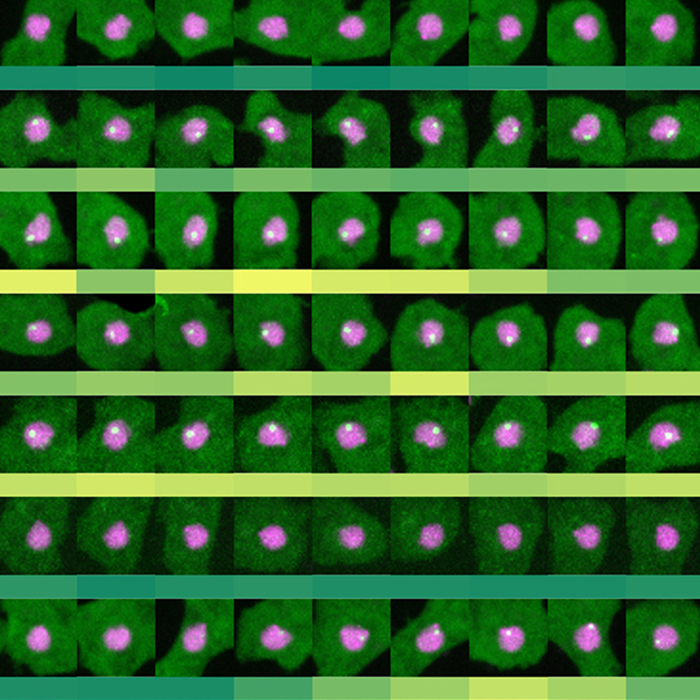Ed Tunnacliffe on his recent PNAS paper
What discoveries led you to the research described in your publication?
This project began with the knowledge that more than 30 highly-related genes, all encoding the same protein, actin, are present within our favourite amoeba, Dictyostelium discoideum. In fact, this had been known, at least in part, since the late 1970s and yet work on the gene family had largely dried up in the 1990s. Following publication of the complete Dictyostelium genome sequence in 2005, the full extent of the actin gene family within this organism became clear. In particular, it was noticed that of these 30+ genes, 17 of them encode instructions for making the exact same protein. It was from this rather simple observation, combined with the knowledge that new techniques were now available by which to study genes and their products, that the project was initiated.
What were you trying to understand?
We started with quite an open-ended question: Why does this organism have so many genes which make the same protein? It’s very common for organisms to have multiple copies of genes which can be generated by accidental duplication events during evolution. However, most of the time the amino acid sequences of the proteins made by these genes will diverge over time. In this case, the amino acids sequences have remained the same in a large number of genes over a long period of time which suggested to us that there must be something important about this particular gene family organisation.
We addressed this question primarily by looking at how these genes are switched on and off in living cells. In doing so, we also managed to learn something, perhaps more fundamental, about the way in which transcription (the first process required to make a protein from a gene) is controlled.
Why is this important?
Regulation of gene expression (the generation of proteins from their DNA instructions) is a fundamental process in the life cycle of a cell or organism. While we understand a lot about the multitude of ways in which this process can be controlled, there is still more to be learned. In this work, we’ve shed a little more light on the relative importance of certain regulatory inputs required to transcribe a gene. On top of this, the fact that genes don’t exist in isolation but are related (or identical in our case!) to others within an organism, adds another layer of regulatory control required to coordinate cellular processes effectively. Our work indicates that the expansion of a gene family by duplication during evolution could have been harnessed to enable diverse responses to environmental conditions.
Can you use an analogy to help us understand your work?
Think of a gene as a recipe for your favourite dish, while the protein resulting from that gene is the meal itself. Each dish can only be made in a specific kitchen located somewhere within your favourite town or city. In order to make each dish, you need a chef to arrive at that particular kitchen, and she can be encouraged to do so by the estate agent who ‘promotes’ the use of the kitchen to make the dish. The agent does this by calling up all her most persuasive friends to smooth-talk the chef into entering that particular kitchen. Once the chef has entered a kitchen, the presence or absence of important utensils or appliances will make cooking the dish more or less difficult – the environment is more or less permissive.
In this work, one of the things we tested was whether the phonebook of the estate agent (promoter sequence of the gene) or how well the kitchen is kitted out (genomic context) is more important for cooking the dish of interest. We found that, in our system, the ‘phonebook’ (or promoter) is almost completely dominant in determining this.
With regards to the gene family aspect of the work, imagine that a particular dish is available for cooking in many different kitchens throughout the town, with these ‘duplicate’ kitchens generated by accident a long time ago. Initially, because they were duplicated entirely, the phonebook of the estate agent would be identical for all these kitchens. However, over time the contacts which the estate agent for each kitchen had in her phonebook changed (remember this is most important for determining whether the dish gets made or not). This would mean that the situations in which a chef was recruited became different for each particular kitchen, depending on who would respond to the estate agent’s call at any one time. This is despite the fact that the dish being made is identical. We think this is important because it may allow a town (or cell) to effectively alter the production of the dish in response to different situations, depending on how active some of the estate agent’s smooth-talking friends are at the time.
What questions remain to be asked?
This study was done using a relative simple organism in Dictyostelium. Although many of the ways in which gene expression is controlled are conserved from mammals through to amoebae, this organism appears to lack some more complex features such as polycomb repression and long-range interactions between distal regulatory elements and the gene promoter. Therefore, it remains to be seen exactly how these results translate to a mammalian system. Furthermore, in determining the role of the promoter as the dominant regulatory feature in transcription we only compared two of these identical actin genes. This was important as it was a nicely controlled system, in that all other features of the genes were the same. However, it would be interesting to see if this holds for genes completely unrelated to actin in the same organism.
Link to Ed's publication here.
Written by Ed Tunnacliffe
 Close
Close


